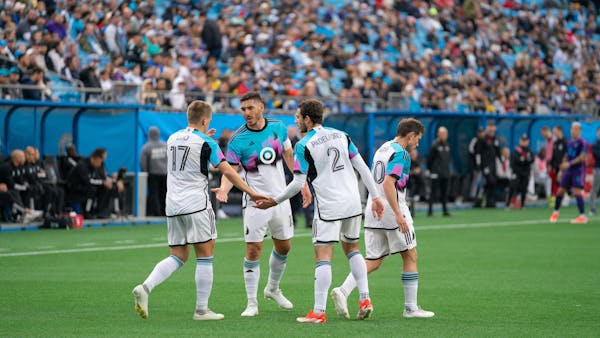At some point, Emanuel Reynoso may return to the Twin Cities. He may end his latest unexcused absence and rejoin MNUFC. He hasn't played for the Loons since March 16, so he'd effectively be starting a second preseason, perhaps practicing with the club's second team, as he tries to get back to full fitness.
But even if he does decide to come back, and he does make it all the way back to game-ready, one thing seems clear: his old role with the Loons has disappeared.
Every season since his arrival in 2020, Reynoso has ranked among the top players in MLS in every on-ball statistic. Almost no one tried to dribble past more defenders. Few took more touches in the attacking third. Nobody in the league created more shots, per 90 minutes, than Reynoso did in 2023.
In his native Argentina, they call that role the "enganche." In the USA, we usually just call it "the number 10." But whatever term you use, it speaks to a particular type of player: the one who always has the ball, the fulcrum of the entire offense, the one who creates the chances.
It can be beautiful, watching a number 10 work, weaving through defenders and finding impossible spaces for passes. It can also be frustrating, watching an entire team stand around, waiting for one player to make something happen.
Since Reynoso arrived in 2020, fans have grown used to seeing some version of the same offensive plan, in every game: get the ball to Rey. Whether it's on the counter-attack, in road games, or as a way to break down the opposition defense, in home games, the Loons leaned on Reynoso's skills to drive the offense.
Under Eric Ramsay, though, that plan has changed.
"We are much more of a group where the strength of us will be the collective, and it won't be one, two, or three particular individuals," said the manager.
He didn't name any names, nor were any names named in the question he was asked, but the thrust was clear.
"I think you've seen that in the way that subs have contributed, you've seen in the way that we've used the squad, and the way I've spoken about how we want to develop players," he said. "We do have to get to a point where we can start to rely on individuals to really take the game by the scruff of the neck, so that's obviously an ongoing conversation. But it won't fall squarely on the shoulders of any one individual."
You can see this in how he used his squad in Sunday's 3-0 win against Charlotte. The easy choice might have been to continue to start Teemu Pukki as the team's striker, given Pukki's status as one of the squad's designated players.
Instead, Ramsay handed a first MLS start to Tani Oluwaseyi, given his ability to fit the game plan better than the veteran Pukki. And the youngster came through, scoring the first-half goal that set Minnesota off and running.
With right-sided forward Sang Bin Jeong away from the team, playing for his country as they try to qualify for the Olympics this summer, Ramsay might have chosen to plug in Bongokuhle Hlongwane, back on his favored right side.
Instead, Ramsay moved Robin Lod to the right and started Franco Fragapane on the left, giving the two a chance to combine again, after they created a goal against Houston. Again, the move paid off, as Fragapane assisted on Lod's second-half goal in Charlotte.
It speaks to a different approach: no set roles. A fluid attacking plan, rather than a simple one – and one that is flexible enough to depend on multiple players who have multiple skills, rather than just one.
It's unclear when, or if, Reynoso might return to MNUFC. But even if he does, it's even more unclear whether the attacker – a born-and-bred number 10 – can adapt to be part of the team's new style.




